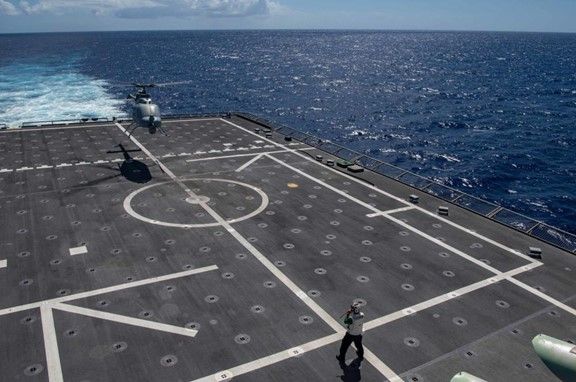
The US Navy has deployed its MQ-8C Fire Scout uncrewed aerial system (UAS) to the Indo-Pacific Area of Responsibility (AOR), aboard USS Jackson (LCS-6).
It is the second deployment of the MQ-8C UAS developed by Northrop Grumman and first to the AOR.
During its operational deployment, the UAS will provide improved maritime intelligence, surveillance, reconnaissance and targeting (ISR&T) capabilities to the forces.
Earlier in April, MQ-8C completed its return to flight operations, aboard Independence-class littoral combat ship (LCS), USS Jackson, in the Philippine Sea.
US Navy captain Dennis Monagle said: “The MQ-8C Fire Scout is an extremely flexible unmanned aerial system and a pillar in the Navy and Marine Corps unmanned campaign plan.
“While Fire Scout will still be active on remaining littoral combat ships, the system is being built into the Constellation-class frigate design, most notably the USS Constellation (FFG-62), as well as other ship classes.”
The US Navy is further planning to deploy the UAS on the Constellation-class guided-missile frigates and for conducting operations under Expeditionary Advanced Base Operations concept from shore sites.
Other potential deployments of the MQ-8C include mine countermeasures, logistics cargo role and anti-submarine warfare.
Northrop Grumman Fire Scout programme director Lance Eischeid said: “The MQ-8C Fire Scout’s initial deployment was aboard USS Milwaukee (LCS-5) in the Caribbean Sea.
“MQ-8C Fire Scout provided increased ISR&T capability that contributed greatly to the success of the US Navy’s counter-narcotics operations.”
The uncrewed system MQ-8C Fire Scout provides critical decision-making capabilities to the naval forces.
It also supports other advanced capabilities, such as sensor information sharing across multi-domain forces, improving weapon capacity, demonstrating manned-unmanned teaming (MUMT), reducing risk and increasing survivability.



